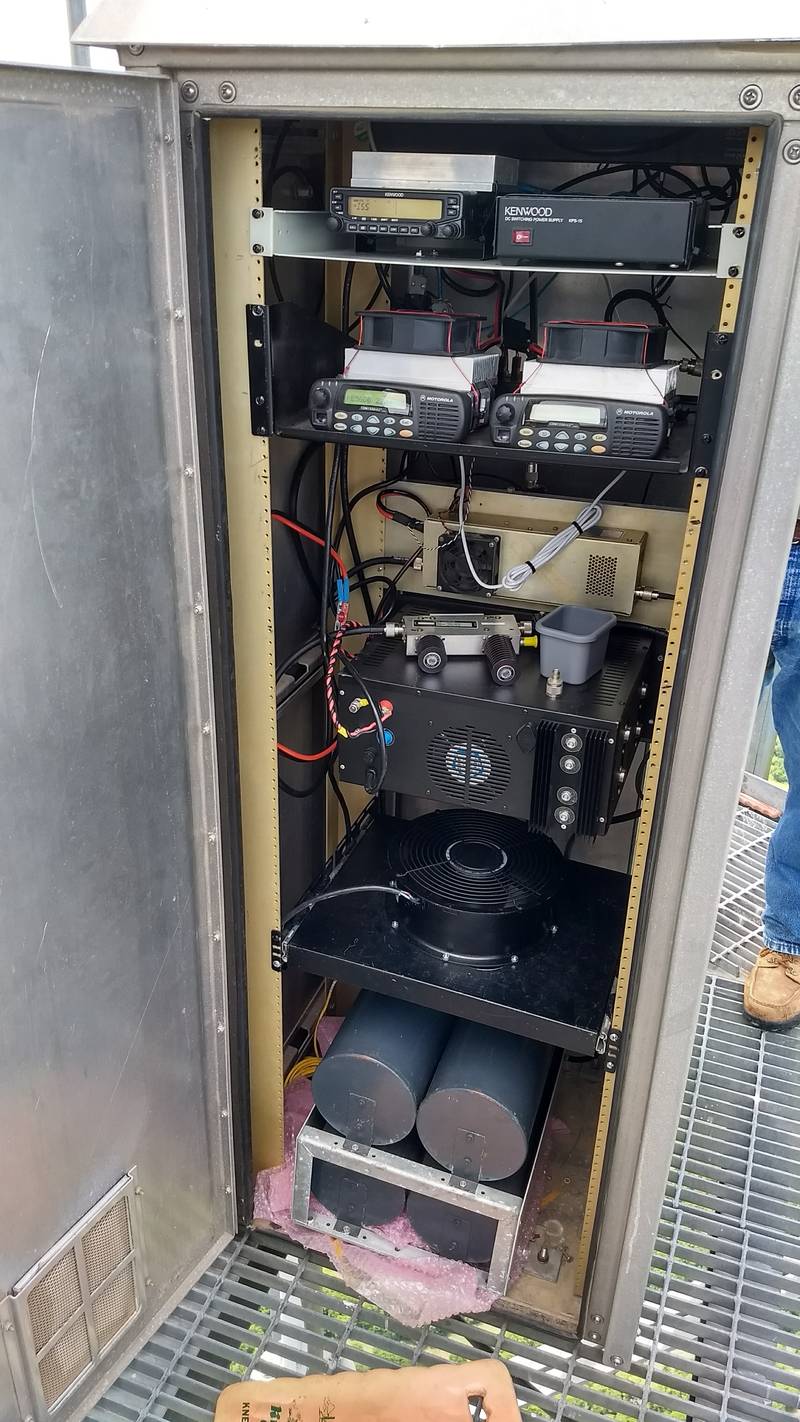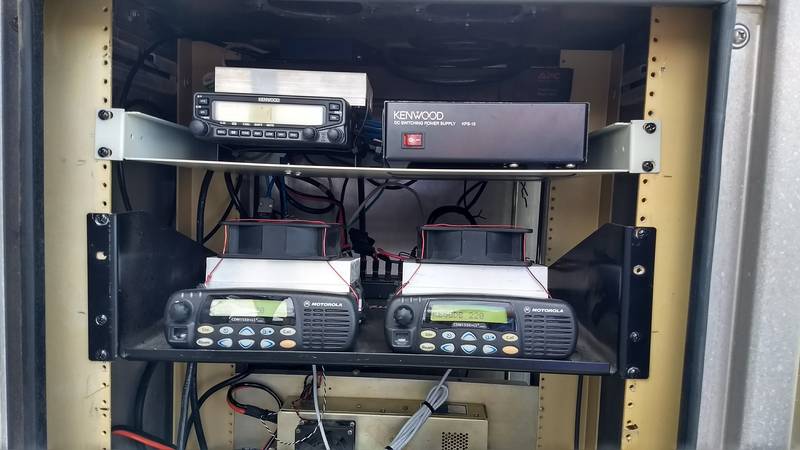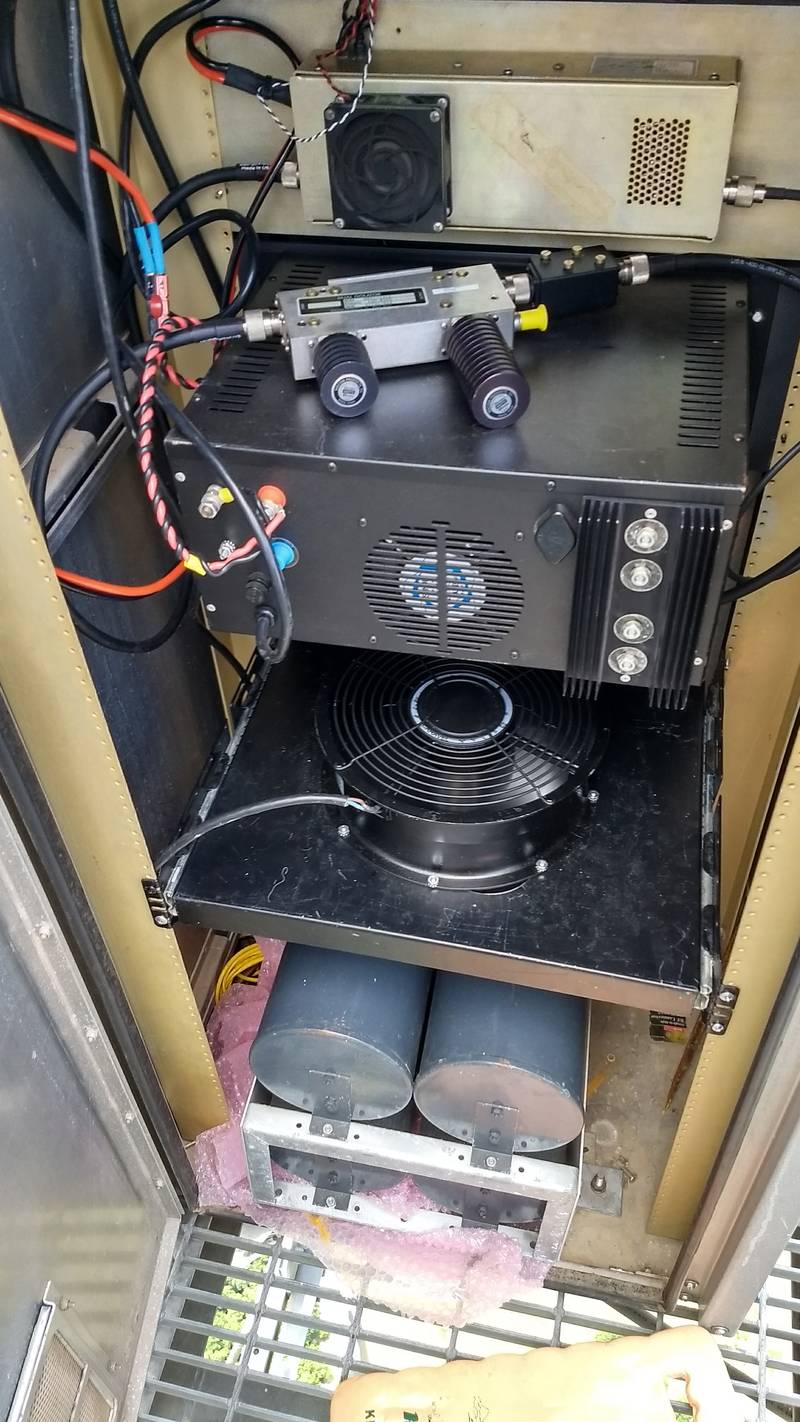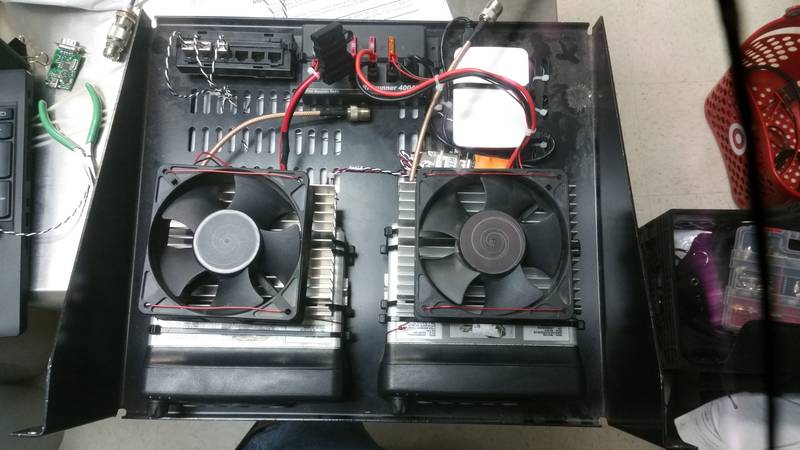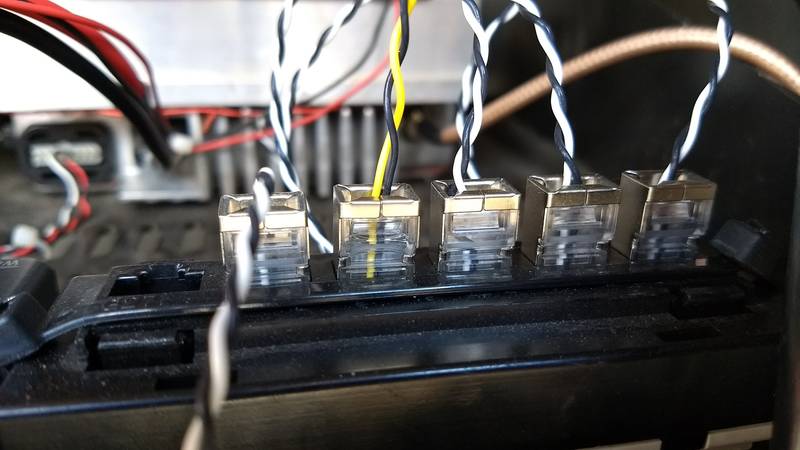User Tools
Sidebar
Table of Contents
224.2 Repeater
The KE5GDB 224.2MHz (pl110.9) repeater likely has the largest coverage area of all 220 repeaters in Texas with the antenna at 1500' AGL. The repeater consists of a pair of Motorola CDM1550 radios, a 100 watt Henry amplifier, CX-333 antenna, and a Raspberry Pi running Allstar as a repeater controller. In addition, the Pi drives a Kenwood TM-V71a Remote Base.
224.2 Technical Specifications
- RX: Motorola CDM1550, -123dBm for 12dB SINAD
- TX: Motorola CDM1550, 28w TPO (6w if running through amplifier)
- Henry Amplifier: 6w in, 100w out
- Duplexers: Phelps-Dodge 4-cavity BpBr
- Isolator
The repeater is run through the 220 port of a triplexer. The 2m and 440 ports are recombined with a diplexer and fed to a Kenwood TM-V71a. This setup makes use of all 3 bands on the CX-333, and provides remote base access as far south as Belton and Madison County and as far north as Oklahoma City.
Power distribution consists of an APC switched PDU and 3 independent supplies: repeater 13.8v (KPS-15), amplifier 13.8v (Astron), and Pi 5v (Monoprice 2.4A something).
Temperature Sensors
A small array of Dallas DS18B20 temperature sensors provide the temperatures of the transmit radio (heatsink), receive radio (heatsink), amplifier (power transistor case temp), and cabinet ambient. The sensors use parasitic power. All sensors are connected via RJ45s, with ground on pin 4 and data on pin 5. The RJ45s are brought to a punchdown block with pins 4 and 5 wired in parallel.
Remote Base
A Kenwood TM-V71a is connected to the Raspberry Pi with a USB-RIM. In addition, an FTDL USB-Serial cable allows control from the Raspberry Pi. The TM-V71a is fed into a diplexer, which is then fed to a triplexer, then to the CX-333. The diplexer/triplexer arrangement allows the single antenna to drive all elements of the 220 repeater and the remote base.
A Python script was written to allow full control of the TM-V71a from the command line. DTMF control is planned, but not yet implemented.
220 CDM1550 Notes
With the additional heatsink and forced air cooling, the CDMs have no issue running 100% duty cycle at the highest power possible, 28 watts. A DS18B20 temperature sensor was embedded in the radio heatsink. Over the course of several hours of continuous transmitting, a 25°C to 32.5°C temperature rise was recorded. This indicates CDMs may be able to run at the full-rated power as long as proper forced air cooling is used.
To use the CDMs in the ham band, a few adjustments need to be made to the CPS and the tuning of the radio.
First, modify your CPS per these instructions (backup). The hex values you're looking for may be in a slightly different location (off by several bytes), but you should be able to locate and make it work.
The radio only operates in 12.5KHz steps. In the event that you're programming to a pair that does not divide evenly by 12.5KHz, program the radio for the nearest channel and use the tuner to warp the reference oscillator to get it on frequency.
Things to adjust:
- TX VCO Attenuator (for wideband use)
- Reference Oscillator (if not evenly spaced)
- Squelch Level

